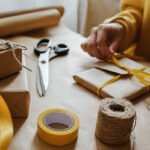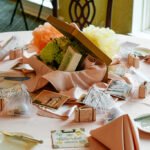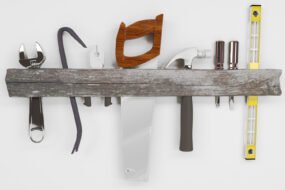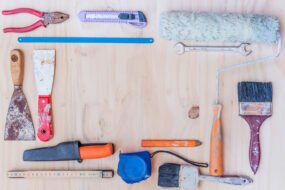
Whether you’re a seasoned DIYer or a beginner just starting out, having the right tools and materials can make all the difference in the success of your projects. From simple home repairs to advanced furniture builds, the tools and materials you choose will dictate how efficient, enjoyable, and professional your work turns out.
Building your perfect DIY toolbox is not just about having the most expensive tools; it’s about knowing which tools will serve you best for your particular projects, and learning how to use them effectively. In this ultimate guide, we’ll walk you through the essential tools, materials, and equipment every DIYer should have in their arsenal, along with tips on how to use them to create beautiful, functional projects.
1. Must-Have Hand Tools for Every DIYer
Hand tools are the foundation of any DIY toolkit. They’re versatile, portable, and can help you complete a variety of projects, from fixing things around the house to building furniture.
Hammer
A hammer is one of the most essential hand tools you’ll ever own. While there are many types, the claw hammer is the most commonly used for general DIY work. It’s perfect for driving nails into wood and pulling them out when needed. A dead blow hammer (with a non-marring head) is also useful for delicate tasks, such as tapping pieces into place without damaging the surface.
Tip: Choose a hammer with a comfortable, ergonomic grip to reduce hand fatigue.
Screwdrivers
Having a set of screwdrivers is essential for assembling furniture, tightening loose screws, or working on electrical projects. You’ll need both flathead and Phillips-head screwdrivers in different sizes. However, for versatility and ease, many DIYers opt for a multi-bit screwdriver or electric screwdriver, which allows you to quickly switch out bits and get the job done more efficiently.
Tip: Invest in a good set of precision screwdrivers for small projects, like fixing electronics or working with delicate components.
Tape Measure
A tape measure is crucial for ensuring accuracy in all your DIY projects. Whether you’re hanging a picture, building a bookshelf, or remodeling your kitchen, measuring is essential. A 25-foot tape measure is generally sufficient for most projects, but you may want a longer one for larger tasks.
Tip: Look for a tape measure with a locking mechanism to keep it in place while you measure, and opt for a wider tape for easier readability.
Utility Knife
A sharp utility knife is useful for cutting a variety of materials, including cardboard, plastic, drywall, or carpet. Choose one that allows you to replace the blades easily for continuous sharpness.
Tip: Keep extra blades on hand to ensure you always have a sharp edge when you need it.
Pliers
Pliers are invaluable for gripping, twisting, bending, or cutting wire, nails, and other small components. There are several types of pliers, but the most commonly used in DIY work are needle-nose pliers (for precision work), slip-joint pliers (for general gripping), and cutting pliers (for cutting wire).
Tip: Consider getting a locking pliers (C-clamp), which can lock onto an object, freeing up both hands for the task.
2. Power Tools for Advanced Projects
Once you’ve got the basics down, you’ll want to add a few power tools to your toolkit to tackle more advanced DIY tasks. These tools can save time and deliver more professional results when used correctly.
Cordless Drill
A cordless drill is a must-have for any DIYer. It’s used for drilling holes, driving screws, and even light demolition work. Look for a drill with adjustable speed settings and a rechargeable battery for ease of use.
Tip: Get a cordless impact driver if you often work with screws and bolts; it provides more torque and is particularly useful for heavy-duty tasks like building furniture or driving screws into dense materials.
Circular Saw
A circular saw is perfect for cutting wood, plywood, and other materials with straight edges. While it’s not as precise as a table saw, it’s a much more affordable and versatile tool for many DIY projects.
Tip: Use a guide rail or clamp a straight edge to your workpiece to help make cleaner, more accurate cuts.
Jigsaw
A jigsaw is ideal for making curved or intricate cuts in wood, metal, and plastic. If you plan to cut shapes, curves, or cut-outs in projects, this tool is an essential addition to your toolbox.
Tip: Always use the appropriate blade for the material you’re cutting to avoid dulling the blade or making messy cuts.
Orbital Sander
An orbital sander is one of the best tools for smoothing wood surfaces. Unlike manual sanding, an orbital sander uses a circular motion to efficiently remove paint, finish, or rough spots from wood, metal, or plastic.
Tip: Sand with the grain of the wood to avoid creating swirl marks, and always wear a dust mask to protect yourself from fine particles.
Table Saw
A table saw is ideal for making straight, clean cuts in wood and plywood sheets. It’s a large investment and not essential for beginners, but if you’re planning to do a lot of woodworking, it’s a valuable tool for cutting large sheets of material with accuracy.
Tip: Ensure you have a good saw blade for the material you’re working with (e.g., wood, MDF, or plywood).
3. Essential Materials for DIY Projects
The right materials are just as important as the right tools. Depending on your project, the materials you use will determine the overall look, durability, and cost of the finished product.
Wood
For woodworking projects, wood is an obvious go-to material. The most common types of wood used in DIY projects are pine, oak, plywood, and MDF (Medium Density Fiberboard).
- Pine is soft and easy to work with, making it perfect for beginners.
- Oak is a durable hardwood used for furniture, cabinetry, and decorative items.
- Plywood is inexpensive and versatile, great for shelving, structural components, and even crafting.
- MDF is an engineered wood product that’s perfect for painting and smooth finishes.
Tip: Always choose the appropriate wood for your project. Hardwoods like oak are great for furniture, while softwoods like pine are better for smaller items or structural pieces.
Nails, Screws, and Fasteners
Having a range of nails, screws, and fasteners on hand is essential for a variety of projects. Ensure you have a variety of lengths and types, such as:
- Wood screws for woodworking projects.
- Drywall screws for hanging drywall or securing plasterboard.
- Nails for general carpentry.
- Anchors for heavy-duty wall mounts and larger projects.
Tip: Use screwdrivers or drills to drive screws rather than a hammer, as this reduces the risk of damaging the surface or material.
Paint and Finishes
Whether you’re building furniture, crafting, or renovating, having the right paint and finishes is critical to the final appearance of your project.
- Latex paint is versatile, dries quickly, and cleans up with water.
- Oil-based paints are more durable and provide a glossy, smooth finish.
- Wood finishes like stains, varnishes, and polyurethane provide protection and enhance the wood grain.
Tip: If you’re staining wood, always test the stain on a small area of the wood to ensure you like the color before applying it to the entire surface.
Caulk and Wood Filler
For repairs, caulk and wood filler are essential materials to keep on hand. Use caulk to seal gaps around windows, doors, and trim, while wood filler is used to fill holes or imperfections in wood before sanding and finishing.
Tip: Once caulk is applied, smooth it out with a damp finger for a clean, professional finish.
Adhesives
Certain projects require adhesives for joining materials instead of fasteners. For wood projects, wood glue is your best bet. For projects involving metal, plastic, or ceramics, super glue or epoxy is ideal for providing strong bonds.
Tip: Always clamp your project after applying glue to ensure the materials bond securely.
4. Safety Gear: Protect Yourself While DIYing
While it’s easy to get excited about completing a DIY project, it’s equally important to protect yourself while working. Safety should always come first, and the right safety gear is essential for ensuring your well-being.
- Safety glasses to protect your eyes from debris.
- Hearing protection such as earplugs or earmuffs to protect your ears from loud tools.
- Dust masks to prevent inhaling fine sawdust, paint fumes, or other harmful particles.
- Work gloves for hand protection when handling rough materials or operating power tools.
- Steel-toe boots for extra protection when working with heavy objects or tools.
Tip: Always read the safety instructions on tools and materials, and never skip using safety gear, even for smaller tasks.
Conclusion: Building Your Perfect Toolbox
Now that you’ve learned about essential tools, materials, and safety equipment, it’s time to start building your own DIY toolbox. Remember that your toolbox will evolve over time as your skills grow and your projects become more complex. Start with the basics, and as you tackle more advanced tasks, add to your collection of tools and materials.
Having the right tools and materials will not only make your DIY projects easier but will also improve the quality of your work. By investing in the right equipment, learning how to use it properly, and keeping safety in mind, you’ll be well on your way to completing successful, professional-looking DIY projects that will last for years.
Happy DIY-ing!
This comprehensive guide on essential tools and materials should provide both beginners and experienced DIY enthusiasts with a solid foundation for tackling any project. Let me know if you have any further questions or would like more detailed information on any of the topics!








